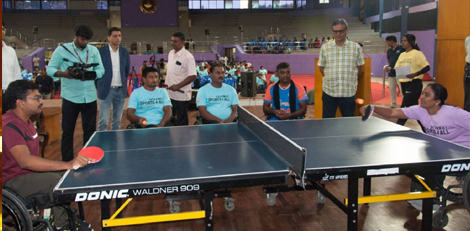Advanced ART techniques are playing a significant role in preventing Repeated IVF Failure
Posted on: 14/Feb/2019 5:32:55 PM

Repeated IVF Failure - Major Reasons & Improved Technologies to increase success rate
� Infertility is today a growing concern around the world, with India having nearly 10-12% of married couples who suffer from the inability to conceive naturally. Among these, only 1% of these couples have turned to IVF (in - vitro fertilization) or other infertility treatments for pregnancy. However the uptake of Assisted Reproductive Technology (ART) for conceiving is on the rise. In the last 40 years since the world�s first IVF baby was born, over 8 million IVF babies have been born worldwide.
Repeated failures in IVF treatment or repeated abortions can narrow the hopes of several patients.Recurrent implantation failure refers to the failure of achieving clinical pregnancy after the transfer of at least four good-quality embryos, in a minimum of three fresh or frozen cycles in a woman under the age of 40 years. The failure to implant maybe a consequence of embryo or uterine factors. Dr. Erika Patel, Fertility Consultant at Nova IVI Fertility, Chennaisaid �In cases with good embryo, one of the most common causes for IVF failure happens to be implantation dysfunction, often identified in young women with a normal ovarian reserve and whose partners are fertile. Human embryo implantation is an incredibly complicated and also multi-factorial procedure. Effective implantation needs the existence of a good embryo, as well as a receptive endometrium. There are several possible factors which can cause the implantation to fail such as thin uterine lining, immunological implantation dysfunction and surface lesions that protrude in the cavity of the uterus.�
Reasons for IVF Failure:
With an average success rate of 40 -50%, there are several couples who experience failed IVF treatment. The best clinics in the world report to have a higher cumulative success rate over 3 cycles of IVF than a single cycle. While treating a patient of repeated IVF failure the challenge is determining the causes of IVF failure like maternal factors including the age, sperm factor, embryo factors, anatomical causes, endometrium thickness,other uterine causes, immunological causes etc.that helps in planning the treatment for better chances of success. Here are the known reasons why an IVF cycle can fail.
Age related:
Maternal age is most important variable in predicting implantation. Advanced maternal age is not only associated with increase in embryo anueploidy but also there is parallel decline in ovarian reserve and response to gonadotropin stimulation. The ovarian reserve of a woman also tends to decline sharply after the mid-30s.
Implantation Failure
The reasons for implantation failure couldbe because of uterine problem and/or quality of the embryo. One must rule out uterine conditions like fibroids, endometrial polyps, congenital anomalies of the uterus,intrauterine adhesions, hydrosalpinx, thin endometrium,endometritis which can interfere with implantation.
Embryo Quality
The health of the embryo depends on the quality of the gametes;i.e the oocyte and sperm quality,in cases with advanced maternal age the oocyte quality can be compromised affecting implantation and success of IVF. Similarly if sperms used during IVF ICSI have a high DNA fragagmentation index can lead to fertilization failure or poor quality of embryo thus affecting IVF ICSI results.
The lifestyle of a patient also plays an important role in the outcome of an IVF cycle. A nutritious diet, maintaining healthy body weight and reduction or elimination of alcohol and smoking helps in a successful IVF cycle. Women who are overweight or underweight not only have an increased risk of infertility but also have fewer chances of a successful IVF cycle versus women of normal weight.
Advanced technologies that improve success rate of IVF
�The causes of Repeated Implantation Failure are diverse and especially due to different maternal factors as uterine abnormalities, hormonal or metabolic disorders, infections, immunological factors, thrombophilias as well as other less common ones. Also it is essential to note the influence of severe male factor and its impact on genetic and morphological state of the embryo. Innovative techniques such as Endometric Receptive Array (ERA), DNA fragmentation and blastocyst transfer are increasingly being used during the IVF process, which have significantly increased the success rate of IVF treatments�, added Dr. Erika Patel.
BLASTOCYST CULTURE
In a conventional IVF treatment cycle, embryos are transferred to the uterus are of day 2 or day 3 stage. However, in a blastocyst culture an embryo is allowed to grow until day 5 in the lab. The embryos are monitored until the blastocyst stage in this method and the best embryosare selected and transferred into the womb of the mother. Unlike the conventional IVF method, blastocyst culture and single blastocyst embryo transfer reduces the risk of multiple pregnancies and IVF failure in patients.







